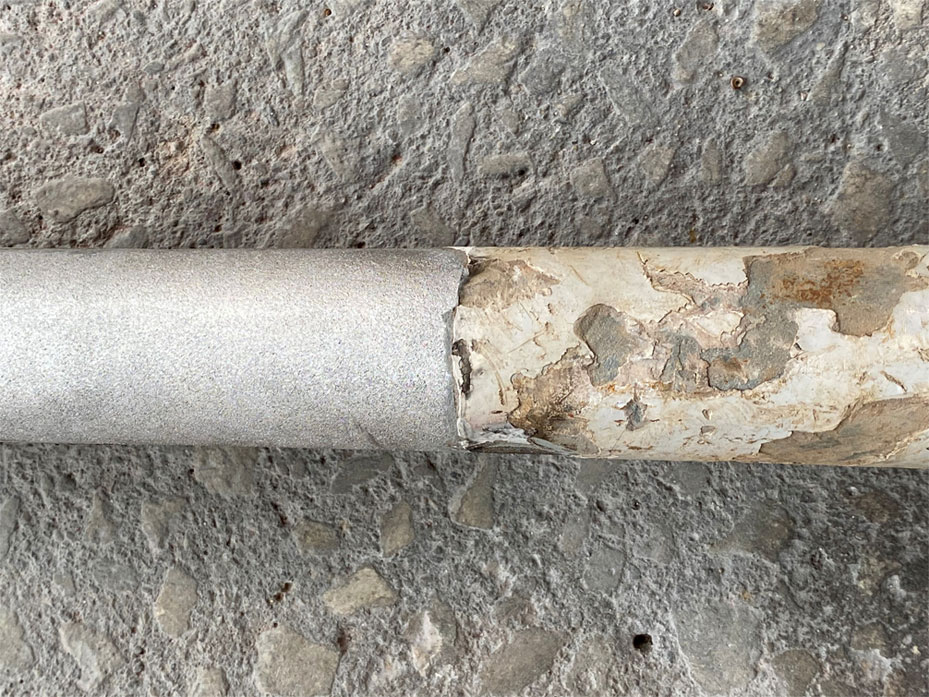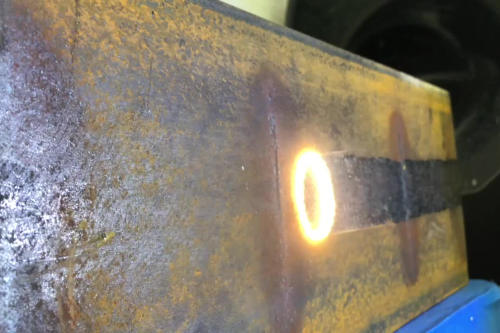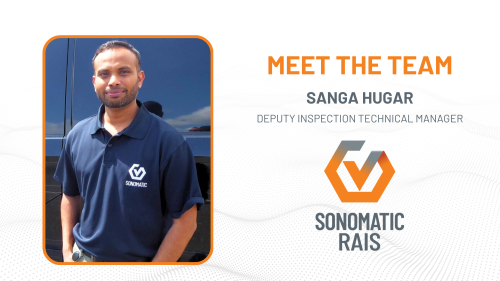In order to keep your equipment running smoothly for as long as possible, it’s crucial that you keep your equipment clean. If dirt, dust, or other contaminants stay on your equipment for too long, it can damage the surfaces or even impair the operation of the device if a layer that is too thick develops.
Dirt and grime buildup on equipment in industrial facilities is inevitable. While the spaces may be kept clean, consistent use of these machines is bound to build up over years of use. As machines get used throughout the years, they may also naturally have rust and residue buildup.
These machines are often coated in grime and dirt through their usual operation, and this grime can also sometimes include hazardous materials. Because of this, simple day-to-day cleaning methods will probably not get the job done, and it can be unsafe for workers to use daily household methods on hazardous materials.
Instead, you need professional industrial cleaning services and tools to make sure everything works as well as it did the first day it was used.
There are many reasons why industrial cleaning is crucial to daily operations and on specified projects in any industrial facility. There are many options for industrial cleaning. Here’s what you need to know about industrial cleaning, the benefits it offers, and the types of industrial cleaning methods that are available.
What is Industrial Cleaning?
Industrial cleaning is a thorough process that cleans industrial equipment and the areas they operate in of dirt, grime, and any hazardous materials that they may be responsible for processing on a daily basis. This type of cleaning primarily occurs in large-scale environments with a lot of expensive equipment, such as manufacturing facilities and power plants.
Industrial cleaning is not to be confused with commercial cleaning services. Commercial cleaning takes place in commercial businesses, such as offices and places of business. Commercial cleaning also involves different chemicals and processes and has different requirements for keeping things sanitary and operational.
While both industrial and commercial cleaning involve high standards for safety and sanitation, they accomplish different goals. An industrial cleaning company instead focuses on manufacturing areas where excess dirt or hazardous chemical buildup could lead to damaged equipment or problems with the product.
Industrial cleaning often uses heavy-duty solvents or advanced cleaning equipment to ensure that any buildup on or around machinery can be thoroughly removed.
Because industrial cleaning often involves working with hazardous materials, heavy-duty equipment, and other things that are common in industrial settings but not necessarily in other commercial settings, the methods and chemicals used are more concentrated and advanced.
It’s important to understand these differences when considering industrial cleaning, as not all cleaning services are the same.
What are the Benefits of Industrial Cleaning?
There’s no disputing that a clean space is a benefit in and of itself, but industrial cleaning, in particular, has a myriad of measurable benefits for the companies that use these services. Here is a quick overview of some of the most popular benefits companies can expect to see after a thorough industrial cleaning.
1. Improved Performance
Because contaminants, even in small quantities, can impact how equipment runs, a thorough industrial cleaning can improve machinery’s performance and reduce downtime. Product buildup makes equipment work harder than it needs to accomplish the same task.
The dirt and grime can get in between the hinges, nuts, and bolts and ultimately slow the machine down. This can contribute to slower work, lower productivity, and even make the equipment more dangerous to work with.
The built-up residue can cause overheating or cause the equipment to stop working entirely. When this equipment is cleaned regularly, it can keep the parts moving smoothly and efficiently.
2. Longer Product Lifetime
By removing product buildup consistently, companies can reduce the daily wear and tear on machines, thus extending the product lifetime for this expensive and essential equipment. A clean product is also easier for inspectors to examine, making it easier for them to spot any small issues the equipment may be having before it actually breaks down.
3. Safer Work Environment
Employees working in manufacturing facilities, power plants, and similar environments are often exposed to contaminants in their day-to-day work. While PPE can reduce the risk of exposure and minimise any health hazards, there’s only so much it can do if hazardous materials are building up in the very equipment the employees are working with.
Industrial cleaning can minimise any hazardous materials that build up on equipment, thus reducing the risk of contamination and contributing to a safer work environment for all employees.
Now that we’ve discussed some of the reasons that industrial cleaning can be beneficial, let’s dive into the types of industrial cleaning methods you may want to consider for your workplace.

Types of Industrial Cleaning Services and Methods
As one of the premier non-destructive testing and industrial cleaning companies, we have plenty of knowledge on various methods used. Here are some of the most popular types of industrial cleaning methods and a quick overview of when each one might be a good choice for your project.
Hydroblasting
This cleaning method involves using water at extremely high pressure to blast debris off a given surface. This method may sound familiar, as it is similar to commercial power washing. However, hydroblasting is done at a much more intensive level.
There are two main types of hydroblasting – high-pressure hydroblasting and ultra-high-pressure hydroblasting.
Hydroblasting ranges from 10,000 to 25,000 psi, and ultra-high-pressure hydroblasting is 25,000 psi and above. The type of hydroblasting method used depends on the equipment and the amount and type of dirt and grime that needs to be cleaned from the equipment. This method can be particularly ideal for cleaning concrete surfaces, such as factory floors or pavement.
In-site Cleaning
This is a type of cleaning that must be done in the area where the item is, as opposed to being able to be performed in an outside space. Because these types of cleanings have to happen where the equipment already is, it’s important to ensure that there is enough ventilation to safely apply any potentially hazardous chemicals used.
One example of this is chemical boiler tube cleaning, which involves using solvents to remove hard water deposits and prevent corrosion from developing around such deposits. These solvents are usually circulated around the system for a specific amount of time, then disposed of and followed by a rinse with plain water to ensure all of the solvent has been removed from the boiler tubes.
Foam Methods
This is a helpful tool for removing dust and dirt from hard-to-reach areas, such as between the grates of a vent. The foam expands and attaches to the dirt and dust, then rinses away and takes that buildup with it. It’s not ideal for every surface, but it can be helpful for floor grates and drains, fans, and similar equipment.
Immersion Cleaning
One of the best and most common ways to clean small, irregularly shaped parts is with immersion cleaning. Immersion cleaning involves placing these irregularly shaped parts into a basket and submerging the basket into a heated cleaning solution or a dip tank.
This solution is made up of either solvent or aqueous cleaning chemicals. While the items are immersed, the solution will do the hard work of removing grit, grime, and mineral deposits that may have built up on the parts or gotten stuck in any small crevices. These parts may even go through a series of dip tanks.
Sand Blasting
This method is similar to hydroblasting but uses sand as an abrasive against the surfaces being cleaned. This can be especially helpful against grease and smoke stains, which are usually less responsive to water-based cleaning methods. Sand blasting can also be used to reduce rust, paint, and other residue on surfaces.
Laser Cleaning
Laser cleaning is a relatively new method that many in the industrial cleaning industry are excited about. Because it does not require using any sort of solvent, the risks associated with a lack of ventilation or solvent spilling are no longer a concern.
Laser industrial cleaning works by irradiating the undesired materials on a surface with a laser beam, quickly and precisely removing them without any damage to the surface underneath. This makes it a great option for many types of surfaces, as it has many benefits and few risks compared to other industrial cleaning methods.
Contact Sonomatic RAIS for your Industrial Cleaning Needs
If you need a new industrial cleaning service or are looking for a team of experts to inspect your industrial workspace, consider contacting us to see if our services could be a good fit for you.
We are committed to providing the highest quality in every project and want to help you ensure that your industrial equipment is running as efficiently as possible so your team can get more done. On top of quality laser cleaning, our SPHERA technology is able to provide top-of-the-line NDT inspections across a range of projects.




